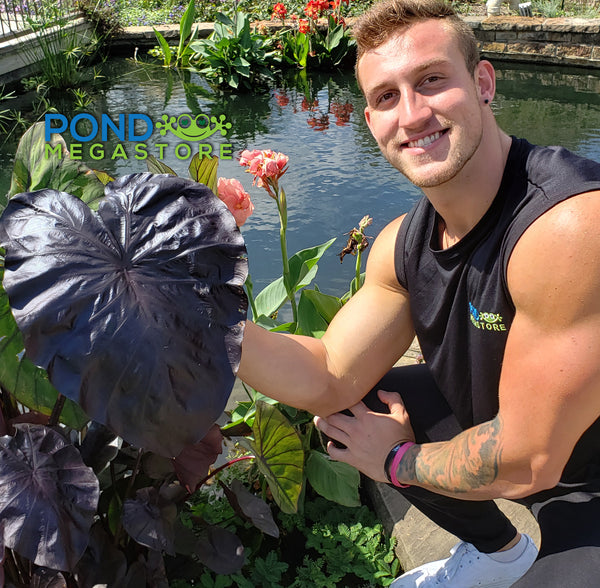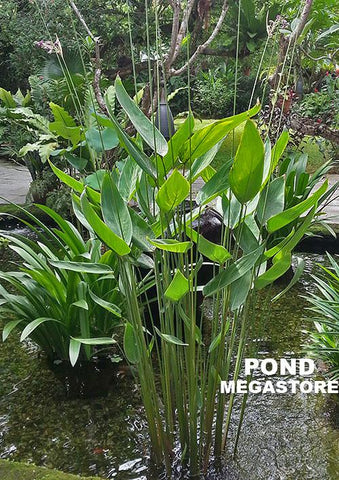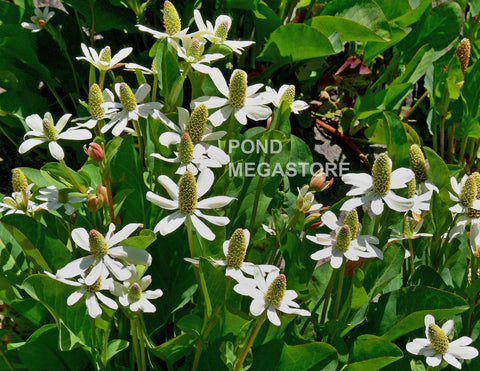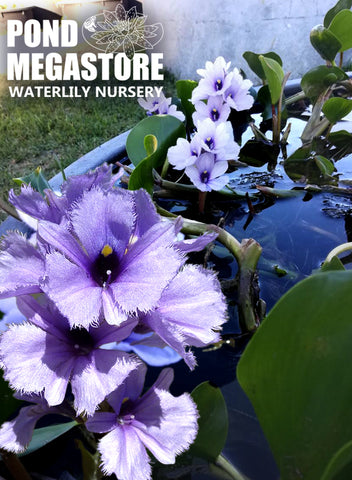Black Taro (Colocasia) is one of the most exotic looking plants you will find anywhere in the world! Very large, oily-black, fluted elephant ears add drama when planted in containers and placed on the patio, as a focal point in your pond, or in rows along a driveway or in front of your home. Black Taro is an amazing plant and is a SHOWSTOPPER! Grows to 36 to 60 inches tall in full sun to part shade. Black Taro is only one of the many new and exciting plants for ponds at Pond Megastore!
Taro Height Grows to 42 inches tall
Taro Width 18 - 24 inch spread or wider
Sunlight Requirements Full sun to shade (Morning sun is best, warmth at root level for good growing)
Moisture Requirements Moist soil or up to 3 inches of water above the top of the container in the pond
Hardy in Plant zones 8 through 12, easily overwinter roots indoors in northern states.
Plant Black Taro in moist soil in your bog or terrestrial garden or place in a container using heavy loam soil and place in your pond with an inch or two of water above the top of the pot. Plant in light sunlight (morning sun) to full shade. Black Taro can be planted in loam soil for the pond or in rich, composted soil for your terrestrial garden. When planting these beauties in your flower garden, keep in mind that they will grow to 42 inches tall--so place them behind shorter varieties! Water during dry spells and fertilize once a month throughout the summer months. Fertilize your pond plants with Waterlily World Fertilizer Tabs + Humates (June through August). In the north, taro bulbs must be lifted after the first, light frost, remove spent foliage and overwinter indoors in dark, cool, dry conditions. Replant in spring after all danger of frost has passed. Add drama and excitement to your water garden this year with Black Taro!
*Always acclimate your marginal plants in a shady area and rehydrate them for a few days before planting. Never place your marginal plants directly in the sunlight until you have acclimated and rehydrated them in a shady area for a few days. Introduce them to full sun slowly. Make sure you plant your marginal plants in loam soil, not rocks! Never place rocks on the top of your soil in the container as this does not allow plants to grow naturally.










